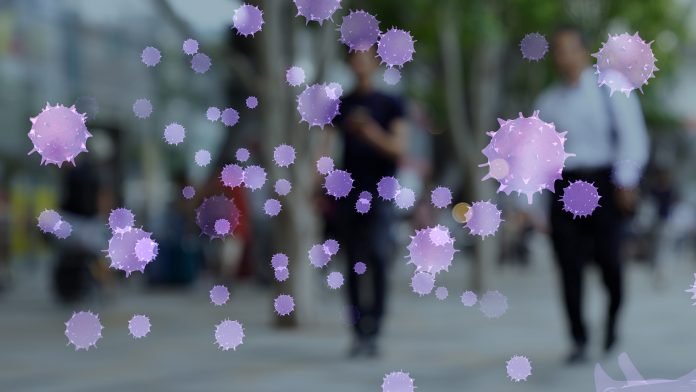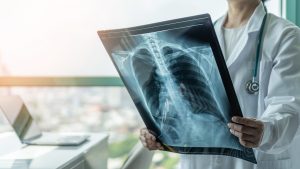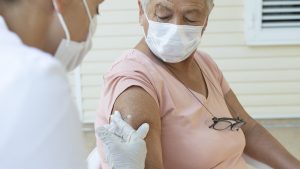
Pneumonia threatens the lives of our most vulnerable members of society including children and older adults, but the risk of infection can be lessened by understanding the causes and preventative measures.
There is any number of microcontaminants like bacteria, viruses, fungal spores, and parasites all around you at any given point in time. No matter how careful you try to be, a normal trip to the store to pick up groceries or a child going to school in the morning can be enough exposure to these contaminants to pose a risk of infection or contamination. While the exact nature of infection can depend on what it was that infected you, and how it entered your body, certain illnesses can be caused by a wide variety of contaminants and lead to much worse situations than initially expected.
For example, pneumonia is a condition that is characterised by infection of the lungs and can originate from many different microcontaminants such as bacteria, viruses, and fungi. It causes the alveoli, which are inside of the lungs and receive air from the trachea, to fill with pus and fluid. This in turn makes breathing very difficult and causes symptoms such as coughing, shortness of breath, fever, fatigue, nausea, and chest pain.
The fact that this condition can stem from so many types of illnesses is one of the main reasons why pneumonia is so prevalent around the world. It is particularly common among children, the elderly, and anyone with a weakened immune system. It is so common and dangerous that the World Health Organization concluded that ‘pneumonia is the single largest infectious cause of death in children worldwide.’ But if it is globally recognised as a threat, why have we not created a pneumonia vaccine to prevent it? And if it cannot be prevented, what can be done to make this disease less dangerous?

There are a few reasons that this infection has managed to stick around despite decades of the medical community openly acknowledging the danger it presents. For starters, pneumonia is not something that is caused by any one specific kind of bacteria or virus. Instead, many different potential factors can lead to this condition in humans. Some cases are caused by bacteria, some by viruses, and some by fungal spores in the air (although it is usually a case of one of the former). Because of this, creating a pneumonia vaccine is very difficult as it would have to counter several different contaminants at once.
In addition, any vaccines that are developed to prevent this disease cannot stop it from occurring due to other lung-related issues. Aspiration, which is when food, drink, vomit, or other matter makes its way into the lungs, oftentimes by swallowing incorrectly, can cause pneumonia just as easily as any virus or bacteria and can occur at any time. Although it is much more common in people who already have trouble swallowing or are heavily medicated, it can happen to anyone, possibly without their knowledge in the form of silent aspiration, which does not always have immediately noticeable symptoms.
Additionally, there are different classifications of pneumonia depending on how it was acquired and where. Some cases are referred to as healthcare-acquired pneumonia, in which the patient caught the disease after or during a stay in a healthcare setting like a care centre, retirement home, or outpatient clinic. This is different from hospital-acquired infections, which can often be more severe given the trend of these contaminants already having some antibiotic resistance or spreading to someone while they already suffer from a weakened immune system.
There is both community-acquired pneumonia and walking pneumonia as well, further complicating the situation, and like above, these forms can require different solutions to counter. However, while no catchall solution can provide immunity to the disease, there are several smaller strategies and medicines that can lower the likelihood of its spread.
To start, while there is no pneumonia vaccine, there are several vaccines that are specifically designed to target contaminants that are commonly responsible for it. Although they will not completely prevent the possibility of pneumonia, they help to ensure that certain common contaminants are not as much of a danger of causing it. This is especially important to older people, as the risk of pneumonia grows exponentially for those over 65, who have weaker immune systems. In particular, this is dangerous not just for the period of actual sickness, but in the years following that as well.
In a 2017 study based in Europe, Professor Tobias Welte, Professor of Pulmonary Medicine and Head of the Department of Pulmonary and Infectious Diseases at Hannover University School of Medicine, stated the following: ‘The disease does not only affect your acute health but, in cases where patients recover, it has long-term consequences for the deterioration of chronic illnesses. Even 10 years after an episode of pneumonia your general healthcare status is likely to be worse than other people of the same age.’
In senior citizens, the difference in health that pneumonia can cause can lead to many complex health issues afterwards. Because of this, it is heavily recommended that anyone over the age of 65 receives appropriate vaccinations to lower the likelihood of contracting the disease. In particular, getting the PPSV23 and the PCV13 vaccines should help to prevent the most common causes of pneumonia, and receiving both is greatly encouraged for those who may be at greater risk from the infection.

In addition to the vaccines, following basic hygiene guidelines revolving around preventing infection, like washing your hands or avoiding contact with people who are already sick, can also have very positive impacts on the spread of these infections. Pay attention if someone at your work or school shows signs of pneumonia. If others start to get it too, then consider whether it is not being caused by something like contaminated air or water, or if those newly infected interacted with the person who was initially infected. Avoiding any spaces frequented by people who came down with pneumonia and washing your hands after any contact between you and them is a reliable and accessible way to take control of your health and lower the possibility that you will also get infected.
Finally, if several people inhabiting the same area seem to have caught pneumonia in a short time, consider whether reaching out to a microbiological testing facility would help. As they are able to identify and quantify the microorganisms in an area or on a surface, they may be able to determine if this infection is being caused by something in the environment. Pneumonia has a long and difficult history of being a very dangerous infection, but that does not mean it has to be a death sentence. Staying informed about relevant safety strategies, developing vaccines and treatment, and the possible symptoms that it causes can help make this potentially lethal infection a much less threatening issue. Pneumonia is not going to stop being such a globally feared infection any time soon, but with proper foreknowledge and honest conversation with medical professionals, it can be overcome before it creates another statistic.
This article is from issue 22 of Health Europa Quarterly. Click here to get your free subscription today.











